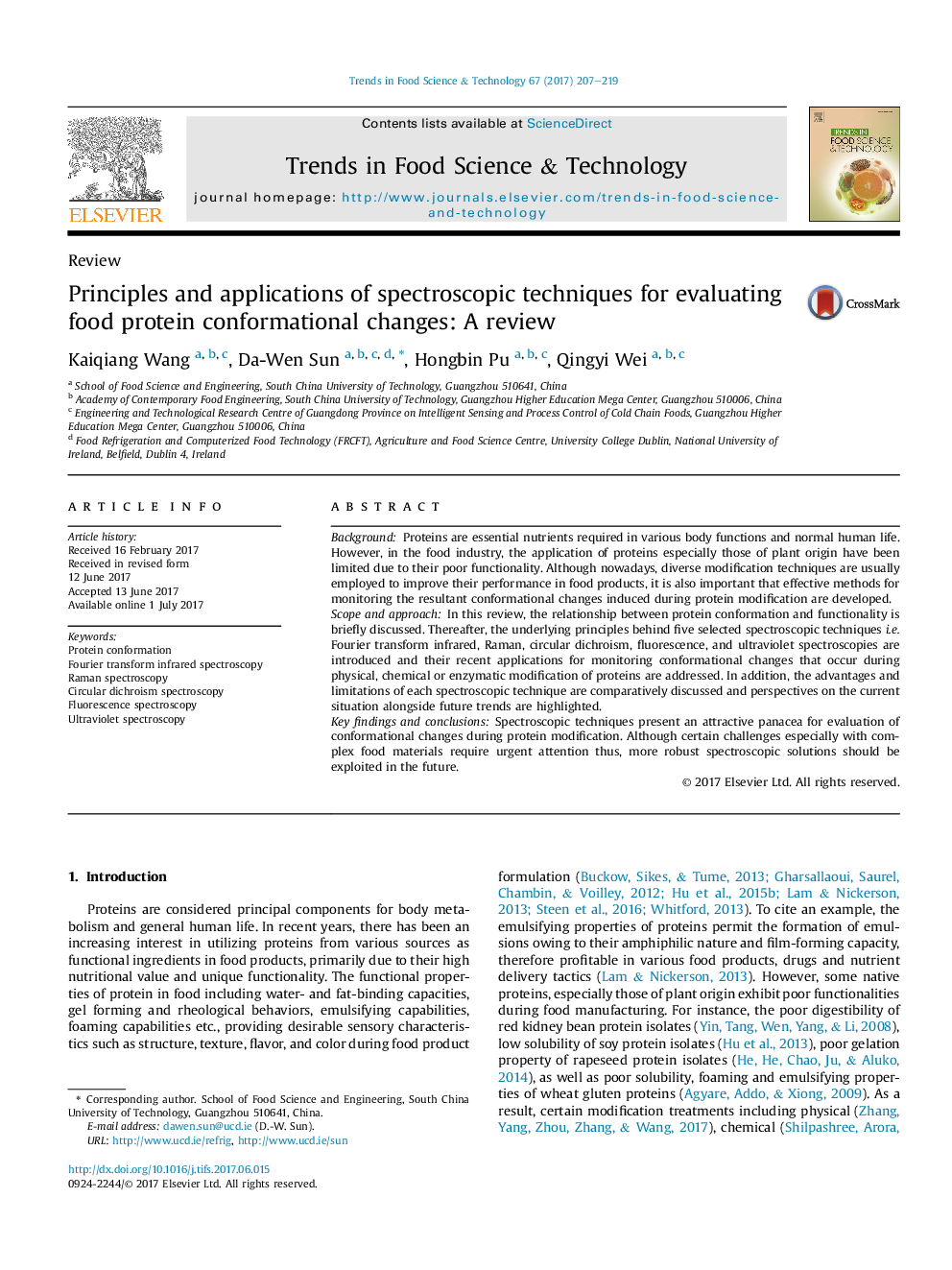| Article ID | Journal | Published Year | Pages | File Type |
|---|---|---|---|---|
| 5523607 | Trends in Food Science & Technology | 2017 | 13 Pages |
â¢Protein modification is essential for obtaining optimal functionalities.â¢Spectroscopies for evaluating protein conformational changes are reviewed.â¢Advantages and limitations of each spectroscopic technique are discussed.â¢Spectroscopic techniques should be used complementary.
BackgroundProteins are essential nutrients required in various body functions and normal human life. However, in the food industry, the application of proteins especially those of plant origin have been limited due to their poor functionality. Although nowadays, diverse modification techniques are usually employed to improve their performance in food products, it is also important that effective methods for monitoring the resultant conformational changes induced during protein modification are developed.Scope and approachIn this review, the relationship between protein conformation and functionality is briefly discussed. Thereafter, the underlying principles behind five selected spectroscopic techniques i.e. Fourier transform infrared, Raman, circular dichroism, fluorescence, and ultraviolet spectroscopies are introduced and their recent applications for monitoring conformational changes that occur during physical, chemical or enzymatic modification of proteins are addressed. In addition, the advantages and limitations of each spectroscopic technique are comparatively discussed and perspectives on the current situation alongside future trends are highlighted.Key findings and conclusionsSpectroscopic techniques present an attractive panacea for evaluation of conformational changes during protein modification. Although certain challenges especially with complex food materials require urgent attention thus, more robust spectroscopic solutions should be exploited in the future.
